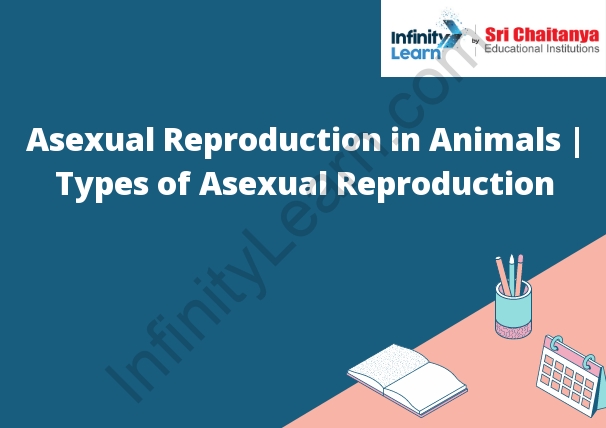Table of Contents
Asexual Reproduction
Asexual reproduction in animals is a process where offspring are produced without the need for fertilization by a male gamete. This can occur through various mechanisms such as simple cell division (cloning), parthenogenesis (development of an egg without fertilization), or apomixis (a form of asexual reproduction where an embryo develops from an unfertilized egg).
Types of Asexual Reproduction & Advantages and Disadvantages of Asexual Reproduction
There are three types of asexual reproduction:
- Binary fission: This is a type of asexual reproduction where a single cell divides into two cells. This type of reproduction is seen in single-celled organisms such as bacteria.
- Budding: This is a type of asexual reproduction where a small protrusion, called a bud, grows from the body of the parent cell. The bud eventually separates from the parent cell and becomes a new, independent cell.
- Fragmentation: This is a type of asexual reproduction where a cell breaks into two or more parts. These parts can then grow into new, independent cells.
There are several advantages of asexual reproduction:
- Asexual reproduction is faster and more efficient than sexual reproduction.
- Asexual reproduction does not involve the exchange of genetic information between parents and offspring, so it is less likely to result in the development of genetic disorders.
- Asexual reproduction is a more reliable way to produce offspring, since it does not depend on the occurrence of a sexual event.
There are also several disadvantages of asexual reproduction:
- Asexual reproduction can lead to the development of genetic disorders, since it does not involve the exchange of genetic information between parents and offspring.
- Asexual reproduction can result in the loss of genetic variation within a population.
- Asexual reproduction is less likely

Features of Asexual Reproduction
- Asexual reproduction is a process where new organisms are created without the involvement of sex. This can be done through a variety of methods, including binary fission, budding, and fragmentation.
- Asexual reproduction is often faster and more efficient than sexual reproduction. It can also produce more genetically identical offspring, which is beneficial in situations where genetic diversity is not desired. However, asexual reproduction can also lead to problems such as inbreeding and the accumulation of harmful mutations.
Some of the Examples of Asexual Reproduction in Animals
There are many different types of asexual reproduction in animals. Some of the most common include binary fission, fragmentation, and budding.
- Binary fission is a type of asexual reproduction in which a single cell divides into two daughter cells. This type of reproduction is common in bacteria and some other single-celled organisms.
- Fragmentation is a type of asexual reproduction in which a single organism breaks into two or more pieces. These pieces can then grow into new organisms. This type of reproduction is common in some invertebrates, such as earthworms.
- Budding is a type of asexual reproduction in which a small outgrowth, or bud, forms on the body of an organism. The bud then breaks off and grows into a new organism. This type of reproduction is common in some fungi, algae, and plants.
Types of Asexual Reproduction
There are many types of asexual reproduction, but the most common are binary fission and budding.
- Binary fission is a type of asexual reproduction in which a single cell divides into two daughter cells. The daughter cells are genetically identical to the parent cell.
- Budding is a type of asexual reproduction in which a small outgrowth, or bud, forms on the parent cell. The bud separates from the parent cell and becomes a new, genetically identical cell.
Advantages of Asexual reproduction
Asexual reproduction does not involve the fusion of gametes and therefore does not produce variation in the offspring. This may be an advantage when the environment is stable and the organism does not need to adapt to changing conditions. Asexual reproduction can occur much more quickly than sexual reproduction, and may be more efficient because all of the offspring are genetically identical to the parent.
Disadvantages of Asexual Reproduction
Asexual reproduction does not produce genetic variation, so populations can become genetically homogeneous over time. This can lead to a decrease in the ability of a population to adapt to changing environmental conditions. Additionally, asexual reproduction can lead to the development of deleterious mutations in a population, as there is no mechanism for purging deleterious mutations from the population.
FAQ’s on Asexual Reproduction in Animals
What are the 5 types of asexual reproduction in animals?
The five types of asexual reproduction in animals are binary fission, budding, fragmentation, parthenogenesis, and spore formation.
What are 5 examples of asexual reproduction?
Five examples of asexual reproduction are: Binary fission (e.g., in bacteria), Budding (e.g., in hydra), Fragmentation (e.g., in starfish), Parthenogenesis (e.g., in bees), Spore formation (e.g., in molds and fungi)
What is asexual reproduction in animals Class 8?
In Class 8, when studying asexual reproduction in animals, you learn how some animals can create new offspring without the involvement of both male and female reproductive cells. It's a way animals can have babies without a mate.
कक्षा 8 जानवरों में अलैंगिक प्रजनन क्या है?
कक्षा 8 में, जब जानवरों के अलैंगिक प्रजनन के बारे में पढ़ाई की जाती है, तो आप सीखते हैं कि कुछ जानवर बिना पुरुष और महिला प्रजनन के भागीदारी के, कैसे नए प्रजनन की प्रक्रिया चला सकते हैं। यह एक तरीका है जिससे जानवर बिना संभाग्यी संजीवनी को साझा किए, बच्चे पैदा कर सकते हैं।
What are the 7 types of asexual reproduction?
Seven types of asexual reproduction include binary fission, budding, fragmentation, parthenogenesis, spore formation, regeneration, and vegetative propagation.
What are 4 examples of asexual animals?
Four examples of animals that reproduce asexually are: Starfish, Planaria (a type of flatworm), Aphids (small insects), Komodo dragons (a type of lizard)









